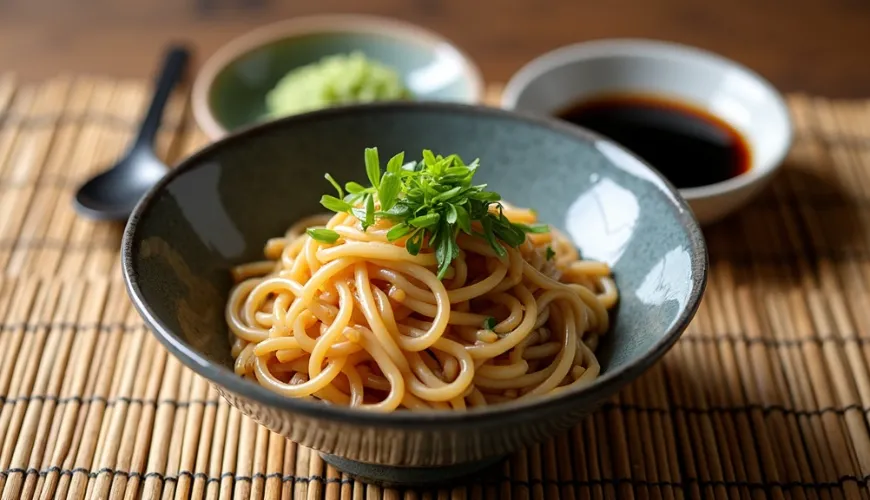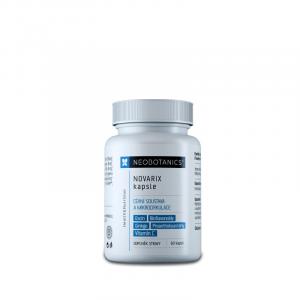
Soba noodles add originality and health to your kitchen

What Are Soba Noodles and Why They Should Be in Your Kitchen
Japanese cuisine has become increasingly familiar in recent years – sushi, miso soup, or ramen are no longer exclusive to oriental restaurants. Among the lesser-known yet equally intriguing treasures are soba noodles, which are gradually finding their place in Czech households. What are soba noodles, how do they differ from other types of pasta, and why should they be part of your healthy diet?
At first glance, noodles might seem like just noodles – long, thin, and served with sauce, broth, or vegetables. But soba noodles have their own story and unique character. They originate from Japan and are made primarily from buckwheat flour, or a mixture of buckwheat and wheat flour. The word soba in Japanese actually means buckwheat, and this is the key to their uniqueness. Unlike traditional wheat pasta, soba noodles have a distinct, slightly nutty flavor, a darker color, and are naturally gluten-free (unless mixed with wheat flour).
Tradition and Health in One Dish
In Japan, soba noodles have deep cultural roots. They are served hot or cold, often as a festive dish during the transition to the new year. They symbolize longevity and resilience – traits that carry over into our desire for a healthy lifestyle. And this is where soba noodles excel.
Buckwheat is known for its high content of rutin, a substance with antioxidant effects that supports vascular health and blood circulation. It is also a rich source of fiber, magnesium, manganese, and vitamin B1. Thanks to this, soba noodles support digestion, help maintain stable blood sugar levels, and provide the body with slow-releasing energy. This makes them an ideal choice not only for vegetarians and vegans but also for athletes, active individuals, or those striving for balanced eating without unnecessary sugar and empty calories.
Try our natural products
Soba Noodles in the Kitchen - Versatile and Quick Solution
Now that you know what soba noodles are, how to actually use them? Their biggest advantage is their quick preparation – typically requiring only 4 to 6 minutes of cooking in boiling water, followed by thorough rinsing with cold water to stop the cooking process and keep the noodles firm and non-sticky.
Soba is perfect for Asian salads, cold bowls with vegetables and sesame dressing, but also as a base for soups or stir-fry mixes. They pair excellently with tofu, tempeh, shiitake mushrooms, sesame oil, and fresh vegetables. In winter, they warm you up in a bowl with hot broth and vegetable pieces; in summer, they refresh as a cold salad with ginger, lime, and coriander.
One of the most common and popular traditional dishes is zaru soba – cold noodles served on a bamboo mat with soy sauce, wasabi, and a side of spring onions. This simple yet flavorful dish beautifully illustrates Japanese minimalism and a sense of balance in flavors.
Soba Noodles Recipe - Healthy and Quick Salad with Peanut Sauce
To go beyond just a description, here's a specific recipe for soba noodles that you can prepare at home in just a few minutes. This dish is inspired by Asian flavors and combines the delicacy of buckwheat noodles with creamy peanut sauce, fresh vegetables, and herbs.
Ingredients:
- 200 g soba noodles
- 1 carrot (shredded into thin strips)
- 1/2 cucumber (cut into sticks)
- 1 red pepper
- fresh coriander or basil
- sesame seeds
For the sauce:
- 2 tablespoons peanut butter
- 1 tablespoon soy sauce
- 1 teaspoon sesame oil
- juice of 1 lime
- 1 teaspoon maple syrup or honey
- 2–3 tablespoons water (as needed)
Instructions:
- Cook the soba noodles according to the package instructions (usually 5–6 minutes), then rinse with cold water and drain.
- Meanwhile, prepare the sauce – mix all the ingredients in a bowl until smooth. If the sauce is too thick, add a bit of water.
- Chop the vegetables, mix them with the cooked noodles, and drizzle with the prepared sauce.
- Finally, sprinkle with fresh herbs and sesame seeds.
This salad is perfect as a light lunch or dinner, or as an original side dish for summer barbecues. Moreover, it can be easily customized – try adding sautéed tofu, edamame, or chili for extra spiciness.
A Little Tip from Practice
Imagine a hectic workday: returning home around six, hungry, tired, and with an empty fridge. At such times, it's ideal to have a pack of soba noodles and a few basic ingredients handy. Within ten minutes, you have a nutritious meal on the table that will not only satisfy you but also delight you. "Soba noodles are like my lifeline – tasty, quick, healthy. And most importantly, I can rely on them," says Lenka, a mother of two, who relies on simplicity and quality in cooking.
Where to Buy Quality Soba Noodles?
Today, there is a wide range of brands available on the market. However, if you prioritize quality and sustainability, choose organic soba noodles made purely from buckwheat flour without wheat additives. In e-shops focused on healthy living, such as Ferwer, you will find products without chemical additives, often in eco-friendly packaging, and with an emphasis on ethical farming. Look for brands that transparently disclose the composition and origin of their ingredients.
Additionally, don't be afraid to experiment – soba noodles can be combined with local ingredients like kale, beetroot, or horseradish to create a unique fusion of Japanese and Czech cuisine.
In a time when more and more people are seeking a balance between taste, health, and the ecological impact of their diet, soba noodles represent a welcome alternative. They are proof that even simple meals can be nutritious, delicious, and considerate of the planet.







